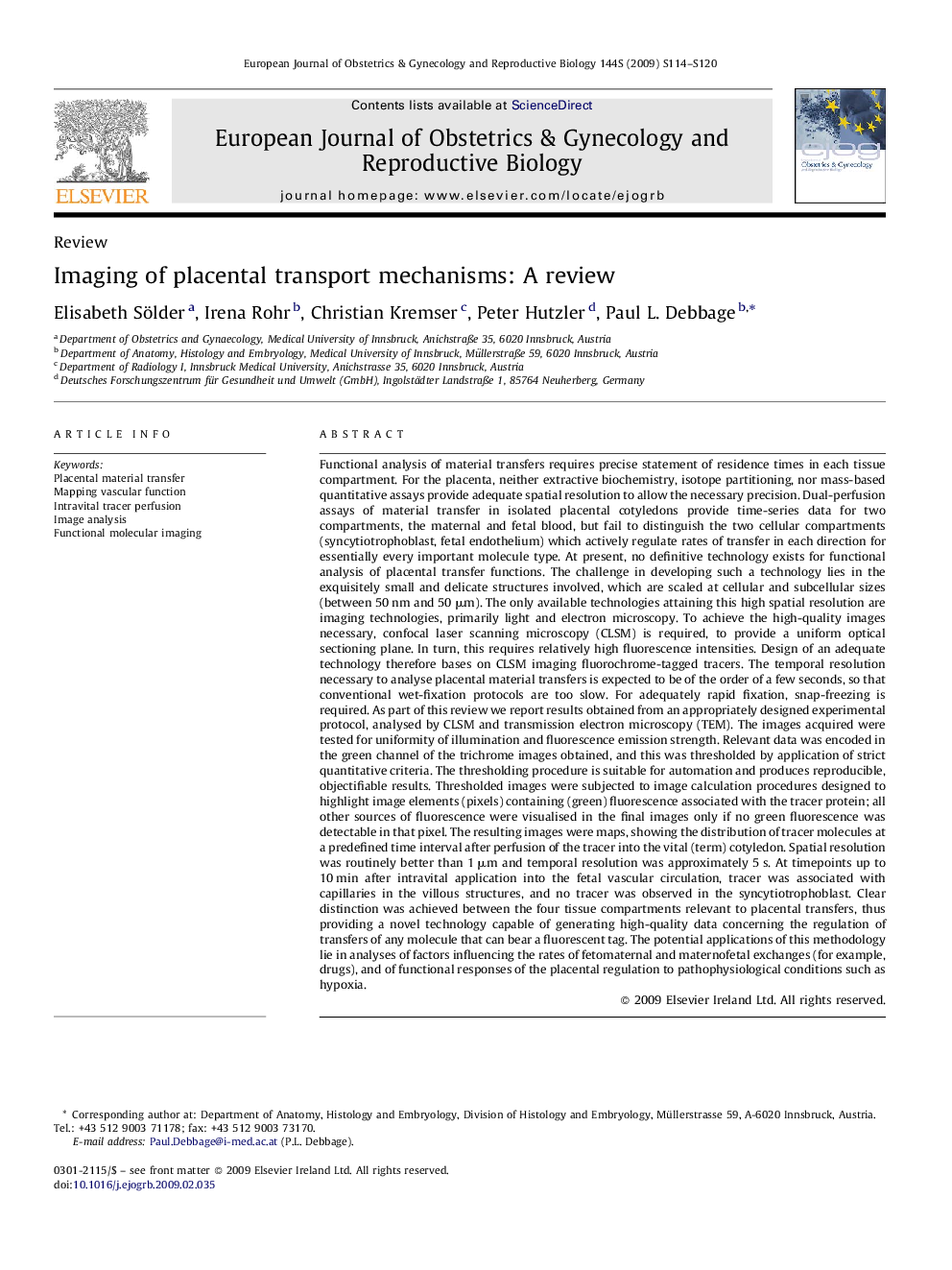| کد مقاله | کد نشریه | سال انتشار | مقاله انگلیسی | نسخه تمام متن |
|---|---|---|---|---|
| 3921019 | 1599866 | 2009 | 7 صفحه PDF | دانلود رایگان |

Functional analysis of material transfers requires precise statement of residence times in each tissue compartment. For the placenta, neither extractive biochemistry, isotope partitioning, nor mass-based quantitative assays provide adequate spatial resolution to allow the necessary precision. Dual-perfusion assays of material transfer in isolated placental cotyledons provide time-series data for two compartments, the maternal and fetal blood, but fail to distinguish the two cellular compartments (syncytiotrophoblast, fetal endothelium) which actively regulate rates of transfer in each direction for essentially every important molecule type. At present, no definitive technology exists for functional analysis of placental transfer functions. The challenge in developing such a technology lies in the exquisitely small and delicate structures involved, which are scaled at cellular and subcellular sizes (between 50 nm and 50 μm). The only available technologies attaining this high spatial resolution are imaging technologies, primarily light and electron microscopy. To achieve the high-quality images necessary, confocal laser scanning microscopy (CLSM) is required, to provide a uniform optical sectioning plane. In turn, this requires relatively high fluorescence intensities. Design of an adequate technology therefore bases on CLSM imaging fluorochrome-tagged tracers. The temporal resolution necessary to analyse placental material transfers is expected to be of the order of a few seconds, so that conventional wet-fixation protocols are too slow. For adequately rapid fixation, snap-freezing is required. As part of this review we report results obtained from an appropriately designed experimental protocol, analysed by CLSM and transmission electron microscopy (TEM). The images acquired were tested for uniformity of illumination and fluorescence emission strength. Relevant data was encoded in the green channel of the trichrome images obtained, and this was thresholded by application of strict quantitative criteria. The thresholding procedure is suitable for automation and produces reproducible, objectifiable results. Thresholded images were subjected to image calculation procedures designed to highlight image elements (pixels) containing (green) fluorescence associated with the tracer protein; all other sources of fluorescence were visualised in the final images only if no green fluorescence was detectable in that pixel. The resulting images were maps, showing the distribution of tracer molecules at a predefined time interval after perfusion of the tracer into the vital (term) cotyledon. Spatial resolution was routinely better than 1 μm and temporal resolution was approximately 5 s. At timepoints up to 10 min after intravital application into the fetal vascular circulation, tracer was associated with capillaries in the villous structures, and no tracer was observed in the syncytiotrophoblast. Clear distinction was achieved between the four tissue compartments relevant to placental transfers, thus providing a novel technology capable of generating high-quality data concerning the regulation of transfers of any molecule that can bear a fluorescent tag. The potential applications of this methodology lie in analyses of factors influencing the rates of fetomaternal and maternofetal exchanges (for example, drugs), and of functional responses of the placental regulation to pathophysiological conditions such as hypoxia.
Journal: European Journal of Obstetrics & Gynecology and Reproductive Biology - Volume 144, Supplement 1, May 2009, Pages S114–S120